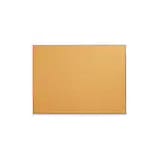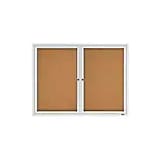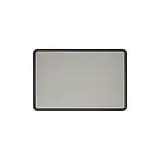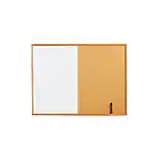Plastic Bulletin Boards
Best Match
Grid view
Pick up and Delivery
Brand
Enclosed
Magnetic
Mobile Capability
Made In America
Price
Trending now
Price is $16.99, Regular price was $20.49, You save 17%
Unit of measure 100/Box Price per unit $0.17/File Folder
Next-Day Delivery by tomorrow
1-hr pickup
1
1
2
3
4
5
6
7
8
9
10
11
12
13
14
15
16
17
18
19
20
21
22
23
24
25
26
27
28
29
30
Over 30


7% off of Staples QuickStrip EasyClose Self Seal Security Tinted #10 Business Envelopes, 4 1/8" x 9 1/2", White, 500/Box (ST50312-CC)
Price is $25.99, Regular price was $27.99, You save 7%
Unit of measure 500/Box Price per unit $0.05/Envelope
Next-Day Delivery by tomorrow
1-hr pickup
1
1
2
3
4
5
6
7
8
9
10
11
12
13
14
15
16
17
18
19
20
21
22
23
24
25
26
27
28
29
30
Over 30
Price is $13.99, Regular price was $15.29, You save 8%
Unit of measure Dozen Price per unit $0.01/Post-it® Note
Next-Day Delivery by tomorrow
1-hr pickup
1
1
2
3
4
5
6
7
8
9
10
11
12
13
14
15
16
17
18
19
20
21
22
23
24
25
26
27
28
29
30
Over 30


20% off of Glad 13 Gallon Trash Bag, 8.5"x8.5", Low Density, .72 mil, White, 100 Bags/Box (CLO 78526)
Price is $15.39, Regular price was $19.39, You save 20%
Unit of measure 100/Box Price per unit $0.15/bag
Next-Day Delivery by tomorrow
1-hr pickup
1
1
2
3
4
5
6
7
8
9
10
11
12
13
14
15
16
17
18
19
20
21
22
23
24
25
26
27
28
29
30
Over 30


13% off of Staples Notepads, 8.5" x 11.75", Wide Ruled, White, 50 Sheets/Pad, Dozen (ST57339M/57339)
Price is $16.99, Regular price was $19.59, You save 13%
Unit of measure Dozen Price per unit $1.42/Pad
Next-Day Delivery by tomorrow
1-hr pickup
1
1
2
3
4
5
6
7
8
9
10
11
12
13
14
15
16
17
18
19
20
21
22
23
24
25
26
27
28
29
30
Over 30
Encourage interaction among employees by placing plastic bulletin boards along hallways to help them keep up with social and professional happenings around the office. Also known as noticeboards and tack boards, a bulletin board displays public messages prominently. It uses a cork-covered board or a similar surface that can hold tacks or pushpins. Staples® carries a wide selection of these boards as well as the accessories required to use them.
Choose Plastic Bulletin Boards for Their Lightweight Frames
While there are unframed cork boards, most bulletin boards have frames that serve as borders and make them easier to mount on walls. In addition to plastic, the most common frame materials are aluminum, wood, and vinyl. Aluminum is a sturdy and lightweight material while wood is heavier but has a classic look. Wood laminate frames look like real wood but are not as heavy or strong.
Vinyl and other types of plastics are lighter than aluminum and wood. Plastic board frames are more affordable than wood and metal options. While not as sturdy as these alternatives, they are durable enough for most locations and applications. You can easily take down and move a plastic pin board. Plastic frames also come in a wider selection of colors. Choose a one in a color that complements the colors of its tack surface and the wall behind it.
Consider Surface Material When Comparing Plastic Bulletin Boards
Cork is the most common surface for bulletin boards. Natural cork is strong and durable and an excellent self-healing tack surface too. There are alternatives to all-cork board surfaces. These include vinyl and fabric-covered cork surfaces and rubber composite boards. Unlike bare cork, vinyl and plastic-covered boards have surfaces that are easier to wipe clean with antimicrobial solutions. These protected corkboards are ideal for schools and healthcare facilities. Fabric-covered surfaces can accommodate staples and Velcro in addition to tacks. Choose one of these if you put up a lot of laminated sheets on your bulletin board. Rubber composite surfaces come from recycled tires and other rubber products. They are durable, water-resistant, and can withstand heavy use.
Are There Plastic Bulletin Boards With Magnetic Surfaces?
Yes. There are plastic notice boards with magnetic backing. Unlike corkboards, you do not insert pins into a magnetic bulletin board. You can pin sheets on it with tiny magnets and also put up magnetic signs and teaching aids on its metallic surface.
Do You Need Combination Plastic Bulletin Boards?
Yes. A combination board has two surfaces: a cork-covered half and a whiteboard or blackboard half. It is more versatile than a regular bulletin board. You can pin notices up on one side and leave written notes on the other side. A combination board is a notice board that also doubles as a teaching tool.
What Are the Color Options for the Surfaces of Plastic Bulletin Boards?
Corkboards mostly come in tan and light brown colors. You can also find them in darker shades and bright colors. Fabric boards can have tan, light gray, and dark blue surfaces. Composite rubber and plastic boards are available in a wide range of glossy colors.
Choose Plastic Bulletin Boards for Their Lightweight Frames
While there are unframed cork boards, most bulletin boards have frames that serve as borders and make them easier to mount on walls. In addition to plastic, the most common frame materials are aluminum, wood, and vinyl. Aluminum is a sturdy and lightweight material while wood is heavier but has a classic look. Wood laminate frames look like real wood but are not as heavy or strong.
Vinyl and other types of plastics are lighter than aluminum and wood. Plastic board frames are more affordable than wood and metal options. While not as sturdy as these alternatives, they are durable enough for most locations and applications. You can easily take down and move a plastic pin board. Plastic frames also come in a wider selection of colors. Choose a one in a color that complements the colors of its tack surface and the wall behind it.
Consider Surface Material When Comparing Plastic Bulletin Boards
Cork is the most common surface for bulletin boards. Natural cork is strong and durable and an excellent self-healing tack surface too. There are alternatives to all-cork board surfaces. These include vinyl and fabric-covered cork surfaces and rubber composite boards. Unlike bare cork, vinyl and plastic-covered boards have surfaces that are easier to wipe clean with antimicrobial solutions. These protected corkboards are ideal for schools and healthcare facilities. Fabric-covered surfaces can accommodate staples and Velcro in addition to tacks. Choose one of these if you put up a lot of laminated sheets on your bulletin board. Rubber composite surfaces come from recycled tires and other rubber products. They are durable, water-resistant, and can withstand heavy use.
Are There Plastic Bulletin Boards With Magnetic Surfaces?
Yes. There are plastic notice boards with magnetic backing. Unlike corkboards, you do not insert pins into a magnetic bulletin board. You can pin sheets on it with tiny magnets and also put up magnetic signs and teaching aids on its metallic surface.
Do You Need Combination Plastic Bulletin Boards?
Yes. A combination board has two surfaces: a cork-covered half and a whiteboard or blackboard half. It is more versatile than a regular bulletin board. You can pin notices up on one side and leave written notes on the other side. A combination board is a notice board that also doubles as a teaching tool.
What Are the Color Options for the Surfaces of Plastic Bulletin Boards?
Corkboards mostly come in tan and light brown colors. You can also find them in darker shades and bright colors. Fabric boards can have tan, light gray, and dark blue surfaces. Composite rubber and plastic boards are available in a wide range of glossy colors.















































